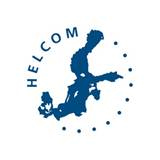
Studies on urban waste water show that common painkiller pollutes the Sea
Finding pharmaceutical flows from
St. Petersburg to the Baltic Sea
20 March 2014
First pilot results on pharmaceutical flows and microplastic litter from St. Petersburg waste waters to the Baltic Sea were published today in St. Petersburg, Russia, in the XV International Environmental Forum - Baltic Sea Day. The activities of HELCOM BASE Project to tackle these increasing environmental threats has discovered that a common anti-inflammatory drug, very difficult to remove in treatment process, can be found in waste water, while concentrations of the 2 examined hormones are low. As per microplastics, the study has found that the treatment process reduces effectively the amount of micro-sized litter, but a part of them also ends up in the water environment.
The EU-funded HELCOM Project on Implementation of the Baltic Sea Action Plan in Russia (BASE) has cooperated on these previously unstudied concerns with the State Unitary Enterprise Vodokanal of St. Petersburg. Vodokanal is a water and waste water company at the forefront of exploring new issues in Russia.
The BASE Project component to identify sources and flow patterns of pharmaceuticals in St. Petersburg to the Baltic Sea focuses on three substances: a common synthetic hormone and a natural hormone, as well as diclofenac, an anti-inflammatory drug. All of them are included in European Union’s pharmaceuticals monitoring watch list, established last year.
Pharmaceuticals and their harmful effects in waterways are a growing concern and only recently, the elevated concentrations have been measured also in the marine environment, and also in the Baltic Sea. Baltic Sea is especially sensitive since it is the final basin of the pharmaceuticals residues consumed by more than 80 million people.
The pilot study on microplastics in waste waters was carried out in the central waste water treatment plant at SUE Vodokanal of St. Petersburg. It is too early to estimate well the proportion of plastics from all the examined micro-sized litter, out of which some pass the purification process. The samples from this study are stored for possible further research.
Annual global plastic production keeps increasing, and it is evaluated that marine litter consists 60–80 % of plastics, most of it being very small and called microplastics. However, only a few studies exist globally about the sources of microplastics, and also the methods of sampling and analysing lack standards. Within HELCOM BASE Project, current methodology and experience of microplastic research will be applied in St. Petersburg waste waters.


